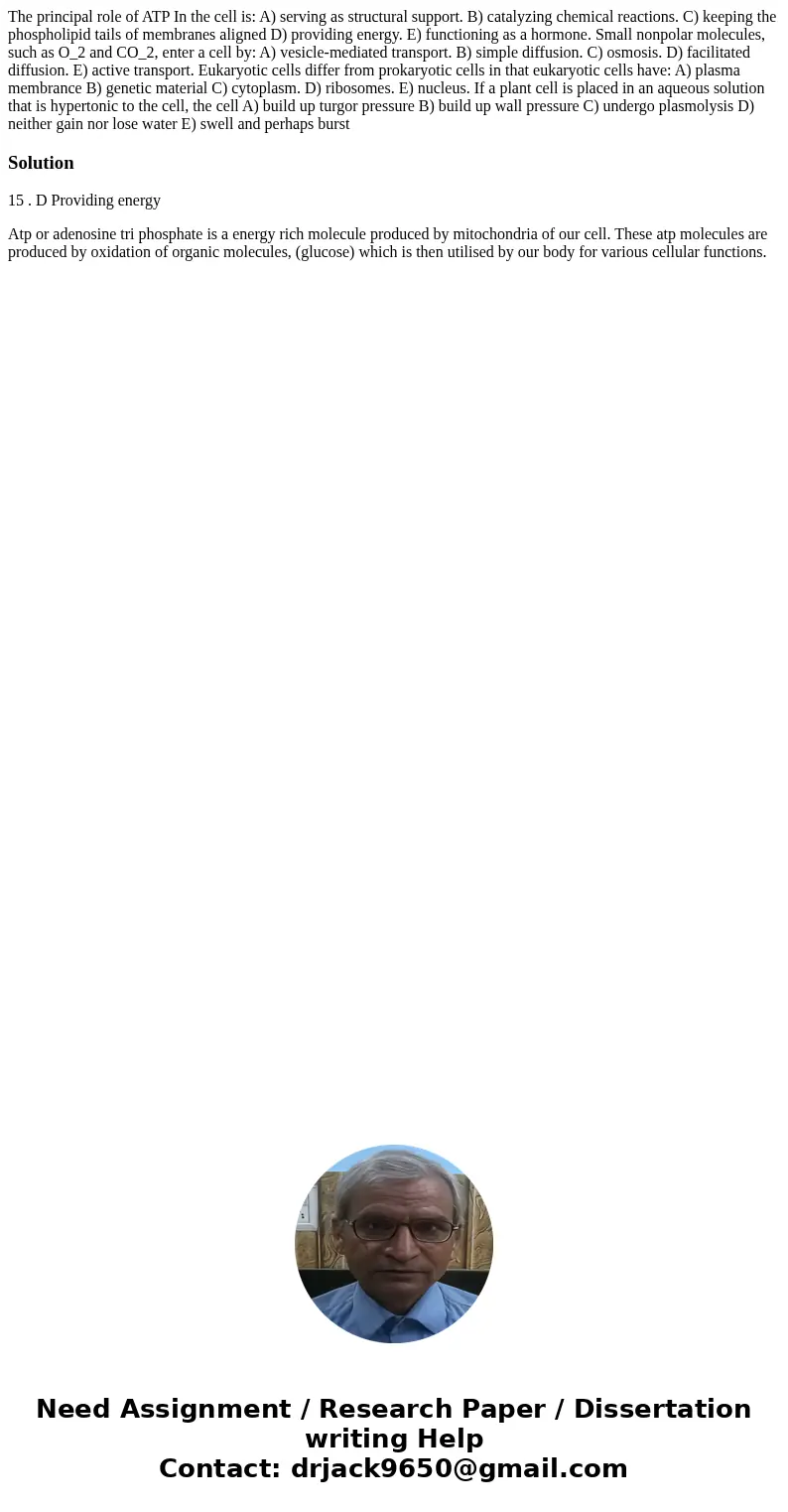The principal role of ATP In the cell is A serving as struct
The principal role of ATP In the cell is: A) serving as structural support. B) catalyzing chemical reactions. C) keeping the phospholipid tails of membranes aligned D) providing energy. E) functioning as a hormone. Small nonpolar molecules, such as O_2 and CO_2, enter a cell by: A) vesicle-mediated transport. B) simple diffusion. C) osmosis. D) facilitated diffusion. E) active transport. Eukaryotic cells differ from prokaryotic cells in that eukaryotic cells have: A) plasma membrance B) genetic material C) cytoplasm. D) ribosomes. E) nucleus. If a plant cell is placed in an aqueous solution that is hypertonic to the cell, the cell A) build up turgor pressure B) build up wall pressure C) undergo plasmolysis D) neither gain nor lose water E) swell and perhaps burst
Solution
15 . D Providing energy
Atp or adenosine tri phosphate is a energy rich molecule produced by mitochondria of our cell. These atp molecules are produced by oxidation of organic molecules, (glucose) which is then utilised by our body for various cellular functions.

 Homework Sourse
Homework Sourse